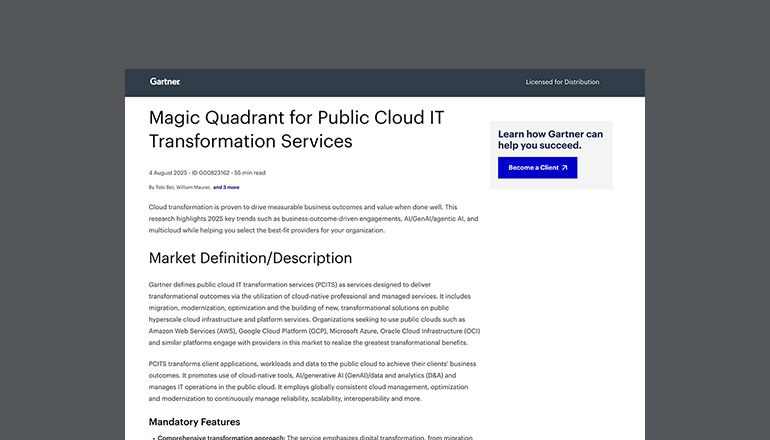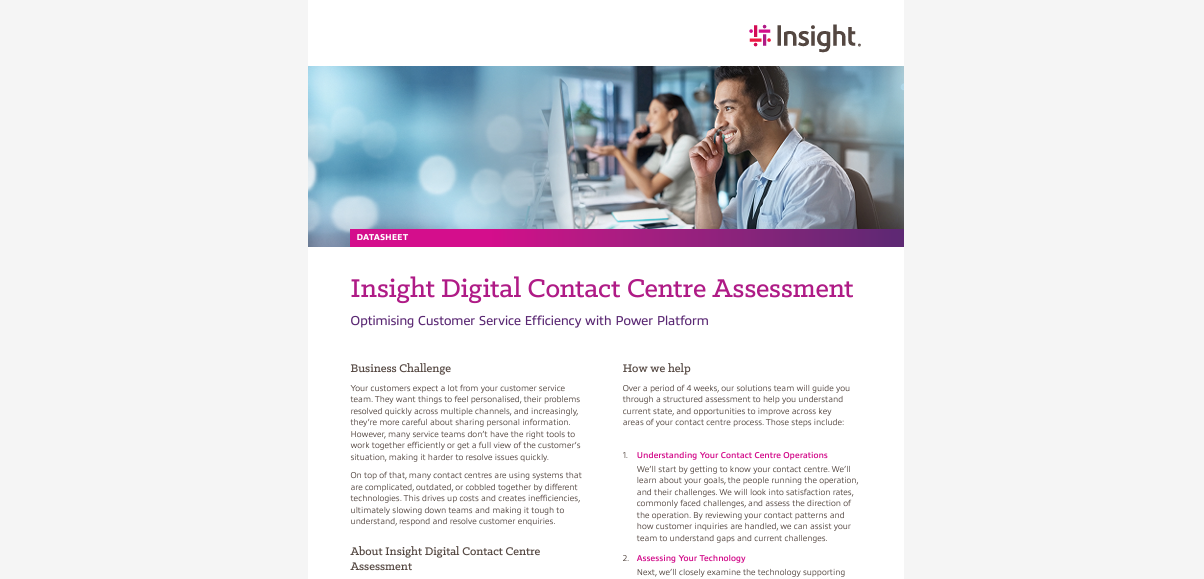Blog Better ROI for AI Adoption: Essential Steps to Build the Groundwork
By Carmen Taglienti / 16 Aug 2024 / Topics: Artificial Intelligence (AI) Application development Generative AI IT modernization

Making the decision to invest in business AI is a big step — and realizing the value of AI adoption is a different challenge entirely. Insight’s Chief Data Officer, Carm Taglienti, sat down with the “AI in Business Podcast” by Emerj to talk mindset, ROI and more. In this article, explore a summarization of the key points he covered or stream the podcast on demand.
The transcript below is edited and condensed for clarity.
What should leaders be thinking about when it comes to picking the right tools and technological approaches for their organizations?
First and foremost, leaders need to ground their thinking in the truth and transparency surrounding their organization’s data. We often ask our clients questions like “Do you understand your data assets? How do you use those data assets for enabling productivity and operational efficiency of the business?” Having clarity on available data and its potential impact on organizational goals is a key piece of the AI adoption journey.
For a lot of organizational leaders, while we're infatuated with this business AI concept, it’s more important to understand what you have, how you are going to use it and what you expect to get out of it. Only until we have answers to those questions can we pick the best tools and approaches.
“Many organizations do it based on gut alone. They say ‘Hey, we're going to have AI, and if we have AI, we're going to make billions of dollars.’ It doesn't work that way.”
How can organizations define parameters for AI adoption ROI?
We’re seeing many organizations taking an exploratory approach — one that emphasizes agility and iterative testing of business AI solutions. Of course, there’s a guiding star for where the business wants to go, but when it comes to use case ROI, our clients find it very helpful to focus on value creation and value realization. At Insight, we visualize the value creation and value realization concept as an infinity diagram.
From a use case perspective, if value is measured by operational efficiency, then your organization should have metrics that are associated with that. If it's measured by productivity, then you’ll need metrics to measure overall yield. From this, you can create an algorithmic approach to AI adoption.
It may not even be immediately obvious what the measurements really need to be. You might end up having to monitor and test to figure how you would measure success — then discover a gem of value you can measure that you can tie to your expected outcome, and leverage that as your value realization.
What are some common denominator problems faced by enterprises in terms of their tech stacks when adopting AI?
I'll keep coming back to the data, because AI is really all about the data at the end of the day. And no matter the industry, disparate and decentralized data continues to be a top pain point when it comes to AI integration. Modernization efforts become key to move the needle, tap into your data and ultimately leverage AI effectively.
This doesn’t mean that suddenly you need this mega data governance program and to “boil the ocean” — it’s more about knowing where your organization wants to go directionally and focusing on the data that can really impact your business. For example, creating actionable applications might be one modernization effort you invest in to be able to bring more clarity, visibility and control around your data.
What mindset should leaders have when considering investing in business AI adoption?
Any effective business leader will always take a highly principled approach to investment decisions — with an understanding that robust processes help assess value realization. The deliberate nature of ROI is knowing how to justify the cost in service of the outcome — that means understanding true asset value or true value of what it is you're going to get out of an AI solution.
Here’s an example: Say you’re a company that provides ambulatory services. The biggest impact you could possibly make is to save lives. What does it take to be able to save more lives?
If it means an investment in better, higher-quality data, then that's something that leadership should be invested in. It might cost millions of dollars, but a principled approach provides the foundation for the investment. The rest is about robust processes and a sound strategy to implement solutions well and drive ROI.




